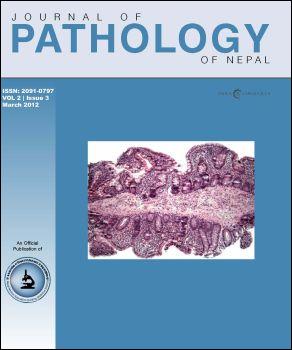Histopathological evaluation of renal allograft biopsies in Nepal: interpretation and significance
DOI:
https://doi.org/10.3126/jpn.v2i3.6016Keywords:
Kidney transplantation, Allograft, Biopsy, End -stage renal disease, RejectionAbstract
Background: Renal allograft biopsy remains the gold standard for the diagnosis of graft dysfunction. Protocol renal allograft biopsies have provided insights into pathogenesis of early and late allograft injury and guided clinical management. The aim of this study was to find out the causes of early and late graft dysfunction in renal allograft biopsies taken at different time points after transplantation.
Materials and Methods: Between August 2008 and February 2011, a total of 98 renal allograft biopsies from 62 kidney transplants recipients were received in the department of Pathology, KIST Medical College and Teaching Hospital. Renal allograft biopsies were interpreted according to the Schemes of Banff ’09 update.
Results: The maximum numbers of recipients were in the age group of 31-40 years. Age ranges from 16 to 61 years. Out of 62 recipients, there were 47(75.8%) males and 15 (24.2%) females. The time of biopsy ranges from 0 hour to 6 years after transplantation. There were 9 (9.18%) cases of acute T cell-mediated rejection, 8 (8.16%) cases of acute antibody-mediated rejection, 6 (6.12%) cases of acute ischemic injury, 6 (6.12%) cases of borderline lesions and 4 (4.08%) cases of chronic calcineurin inhibitor toxicity.
Conclusion: In the early post-transplant period (0-6 months), acute antibody-mediated rejection, acute ischemic injury and T cell-mediated rejection are the major causes for graft dysfunction. In the late post transplant period (> 6 months after transplant), transplant glomerulopathy, chronic calcineurin inhibitor toxicity, viral infections and graft senescence including donor derived disease result in poor late graft survival.
DOI: http://dx.doi.org/10.3126/jpn.v2i3.6016
JPN 2012; 2(3): 172-179
Downloads
Downloads
How to Cite
Issue
Section
License
This license enables reusers to distribute, remix, adapt, and build upon the material in any medium or format, so long as attribution is given to the creator. The license allows for commercial use.




